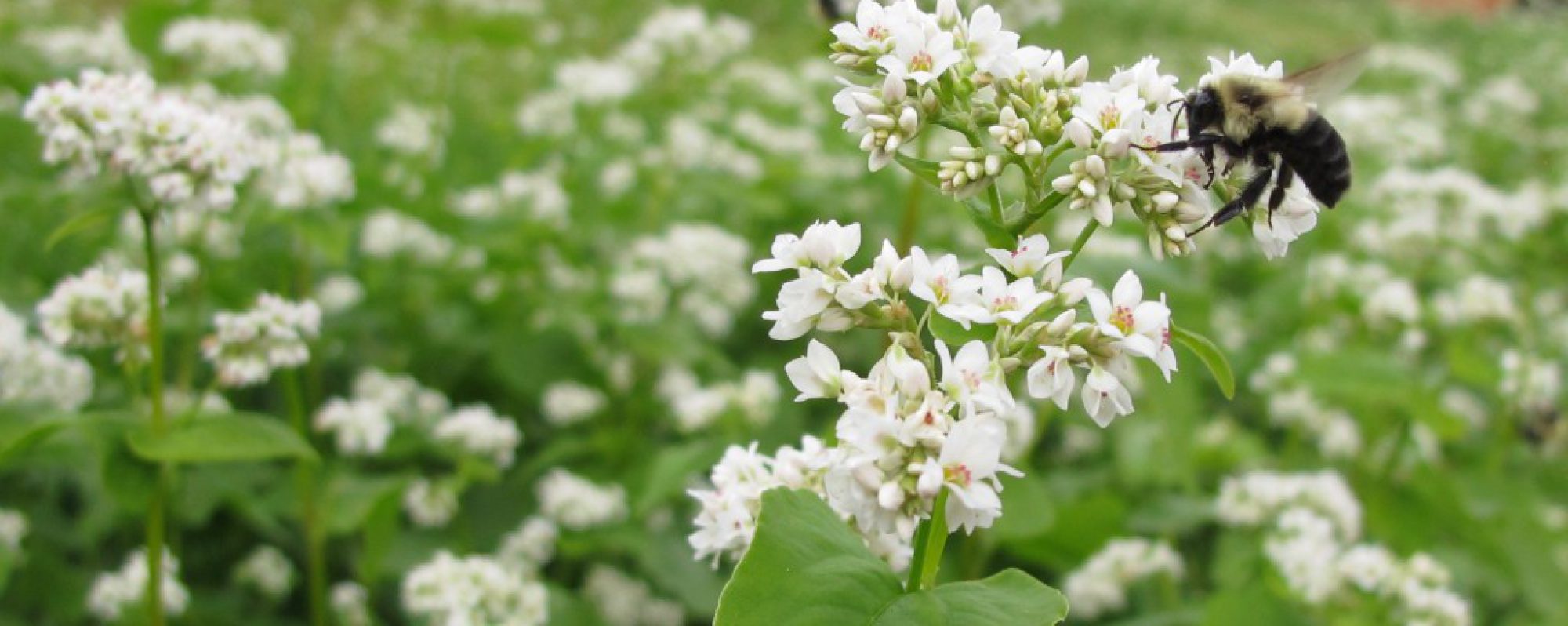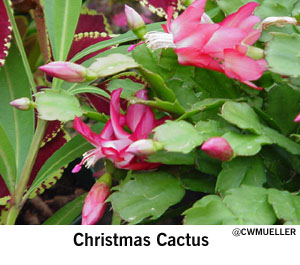By Marc Teffeau
Cherokee County Master Gardener
While Poinsettias are still the number one Christmas holiday gift plant Christmas cactus (Schlumbergera bridgesii) are also very popular. Christmas Cacti have been kept as a holiday plant since the 1800’s. The original Christmas cactus was developed by French botanist Charles Lemaire and named after French horticulture collector, Frédéric Schlumberger. Schlumbergera is the correct botanical name but they are frequently called Zygocactus, their former botanical name. The original hybrids had cherry-red flowers that bloomed during the Christmas season.
The ancestors of today’s Christmas cactus were discovered in southeast Brazil in 1819. The first to be found, Schlumbergera truncata, flowers in October and November and became what is now called the “Thanksgiving cactus”. Another, the Schlumbergera russelliana, discovered in 1837, blooms between February and April and became the “Easter cactus”. A hybrid of these two became the first “Christmas Cactus”. Besides flowering at different times, the leaves of these plants are slightly different. Christmas cacti have flattened leaves with rounded teeth on the margins as opposed to the Thanksgiving cacti that have pointed teeth. Easter cacti have pointed teeth with fibrous hairs in the leaf joints.
There are some 300 hybrid varieties existing in various shades and combinations of white, pink, red, fuchsia and – more rarely – orange and yellow. Since this plant is really a winter-flowering houseplant, it is one of a group of epiphytic cacti native to the South American jungles. The plant is not a true cactus and is not quite as drought tolerant as the name infers. However, it is a succulent plant and can store a reasonable quantity of water in the leaves.
Christmas cacti are not only popular holiday gift plants, but they are also the subject of frequent debate among gardeners. Properly cared for, they can and do thrive for many years. It is not unusual for 40- or 50-year old plants to outlive their owners. They are often passed down to the next family generation, i.e. grandmother’s plant or Aunt Mary’s Christmas Cactus. These long-living plants will develop what appears to be bark and reach a size of several feet with hundreds of blossoms during the annual flowering period.
There appears to be much confusion about these unique tropical cacti regarding care, maintenance and, especially, on how to get them to re-bloom. All of the holiday cacti have similar cultural requirements. We typically think of cacti as being heat tolerant, but Christmas cacti will keep their blossoms longer in cooler temperatures. The Christmas cactus prefers humid conditions, and homes are often dry. One way to raise the humidity–just for your cactus–is to place the pot with its drip pan on top of a small container filled with pebbles. Pour water over the pebbles, but do not allow the water to rise above the bottom of the top layer of pebbles. The water will evaporate, increasing the humidity around the cactus. Keep the plant in a well-lit location away from drafts from heat vents, fireplaces or other sources of hot air. Drafts and temperature extremes can cause the flower buds to drop from the plant before they have a chance to open.
Since Christmas cactus is a tropical type plant, it may, in fact drop flower buds if the soil gets too dry. The plants will wilt when under drought stress. Water thoroughly when the top inch or so of soil feels dry to the touch. The length of time between watering events will vary with the air temperature, amount of light, rate of growth and relative humidity.
The plant does not particularly need to be fertilized while in bloom, but most gardeners enjoy the challenge of keeping the plant after the holidays for re-bloom the next year. While plants are actively growing, use a blooming houseplant-type fertilizer and follow the label directions for how much and how often to feed.
While the Christmas cactus can adapt to low light, more abundant blooms are produced on plants that have been exposed to more light intensity. Keep your plants in a sunny location indoors. Plants can be moved outdoors in summer, but keep them in a shady or semi-shady location. Leaves may start to turn a bit red if exposed to excessive light. Too much direct sunlight can actually burn the leaves or may cause them to become limp. When it’s time to bring the plants back inside in the fall, slowly adjust the plants to life indoors by gradually increasing the number of hours they spend indoors each day.
If your plant tends to dry out and/or wilt frequently, it may be time to repot the plant into a slightly larger container. Christmas cacti flower best when they are a little pot bound, however, don’t go overboard on the larger pot size.
Well-drained soil is a must for Christmas cactus. Use a commercially packaged potting mix for succulent plants or mix your own by combining two parts plain potting soil with one part clean sand or vermiculite. Pruning your Christmas cactus after blooming will encourage the plant to branch out. Remove a few sections of each stem by pinching them off with your fingers or cutting with a sharp knife. These sections can be rooted in moist vermiculite to propagate new plants.
The Christmas cactus is a thermo-photoperiodic plant. The formation of the bud is dependent on a particular combination of day length and temperature. In the Northern Hemisphere these plants will began the blooming process when the length of the day is approximately equal to the length of the night and when the temperature is in the range of 50 to 60 degrees F. Christmas cactus will bloom if given long uninterrupted dark periods, about 12 hours each night. Begin the dark treatments in about mid-October to have plants in full bloom by the holidays. You can place the plants in a dark closet from about 8 P.M. – 8 A.M. each night for 6-8 weeks or until you see buds forming. Christmas cacti will also bloom if they are subjected to cool temperatures of about 50 to 55 degrees F, eliminating the need for the dark treatments. Plants should be blooming for the holidays if cool treatments are started by early November. Happy Gardening and Happy Holidays!!

